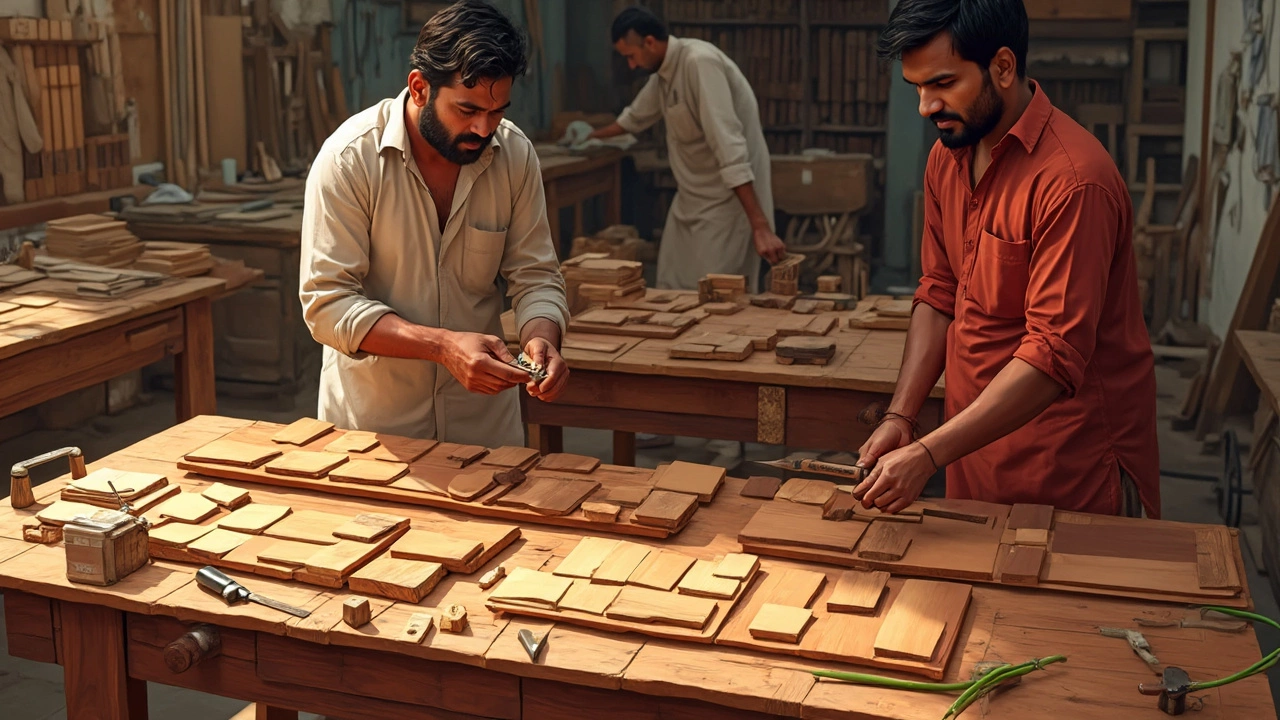Teak vs Sheesham – Quick Guide for Furniture Makers
Ever stood in a showroom and wondered why some pieces say "teak" while others shout "sheesham"? Both woods are Indian stalwarts, but they don’t behave the same. Let’s break down the key differences so you can pick the right one without guessing.
Durability and Strength
Teak is famous for its natural oils. Those oils act like a built‑in waterproof coating, making teak resist rot, insects, and decay even in humid climates. If you’re building outdoor chairs, garden tables, or boat decks, teak’s resistance is a huge plus. Sheesham, also called Indian rosewood, is dense and hard, but it lacks teak’s oil content. It holds up well indoors and can last decades if sealed, but prolonged exposure to rain or soil will eventually weaken it.
In terms of hardness, both score high on the Janka scale (teak around 1,070 lbf, sheesham about 1,800 lbf). Sheesham’s higher number means it’s slightly tougher to dent, which is great for heavy‑use items like dining tables. Still, teak’s flexibility makes it less likely to crack under stress, a trait designers love for curved furniture.
Cost and Availability
Teak carries a premium price tag. Sustainable plantations are limited, and importing genuine Burmese teak adds to the cost. Expect to pay roughly 30‑50% more than sheesham for the same dimensions. Sheesham is more abundant across India, especially in the central and southern states, so it’s easier to source locally and usually cheaper.
If budget is tight, sheesham gives you a hardwood look without breaking the bank. But remember, lower cost often means you’ll need to invest in a good finish to protect it, especially for outdoor use.
Beyond price, think about the finish you want. Teak’s natural golden‑brown patina deepens with age, and many owners cherish that weathered look. Sheesham starts darker, with reddish‑brown streaks, and takes a high‑gloss or matte finish evenly. Both respond well to oil, lacquer, or polyurethane, but teak needs fewer re‑applications over time.
So which wood should you choose? If you need maximum weather resistance, low maintenance, and are willing to pay extra, go with teak. For indoor furniture, heavy‑use pieces, or projects where cost matters, sheesham offers comparable strength with a beautiful grain pattern.
In the end, the decision boils down to the environment the piece will face, your budget, and the aesthetic you prefer. Knowing these basics will keep you from making costly mistakes and help you deliver furniture that lasts.

Best Tree for Furniture in India: A Practical Guide
Trying to figure out which tree makes the best furniture in India can get confusing with so many choices on the market. This guide breaks down the most popular types of wood used by Indian furniture makers, giving you practical info on their strengths, looks, and pricing. You'll learn what really matters when picking wood, plus pro tips to get sturdy, lasting pieces. If you want quality furniture or just want your next table to last more than a few years, this article gets you sorted. No confusing jargon—just facts, tips, and straight talk.
Read More